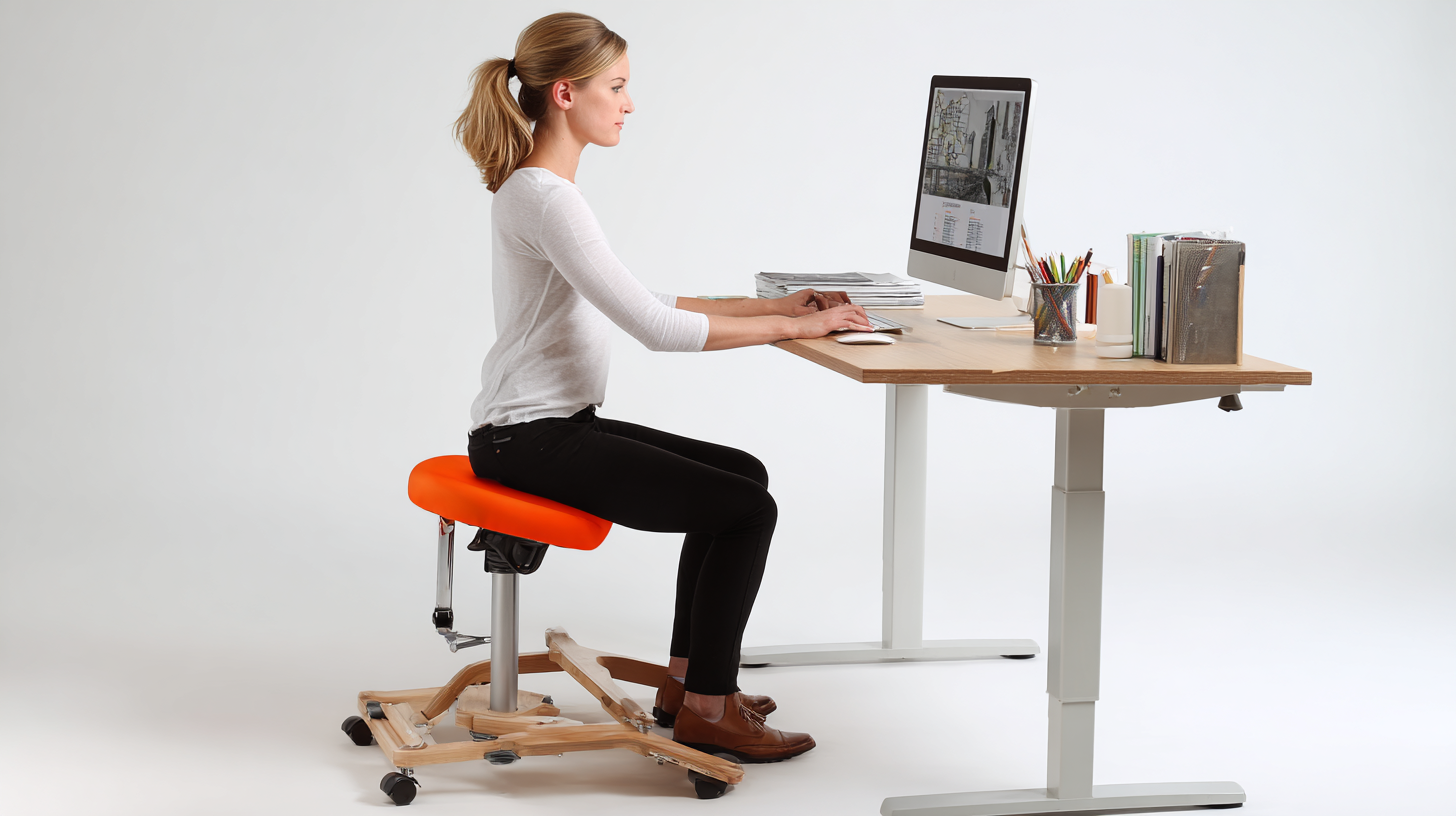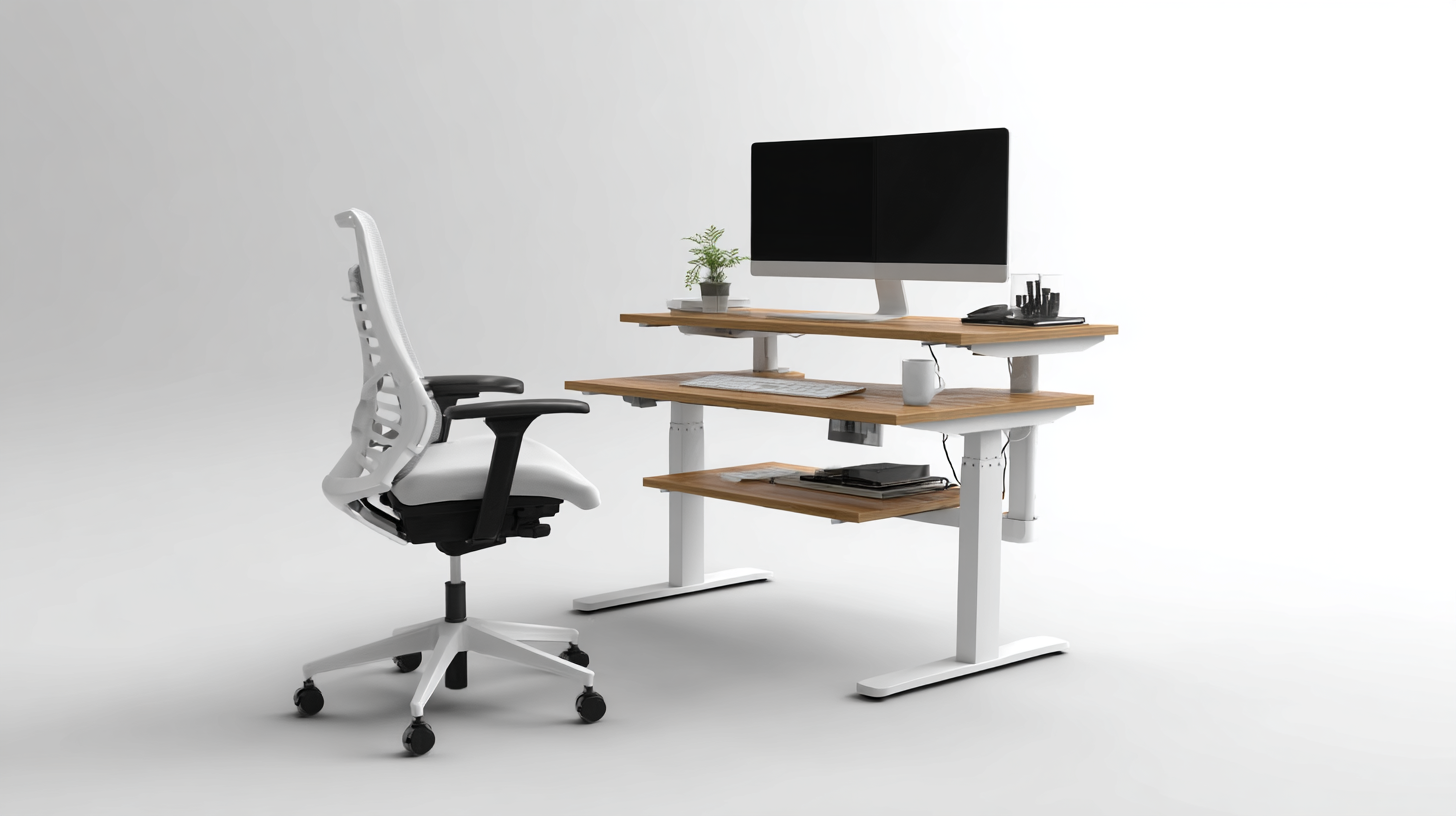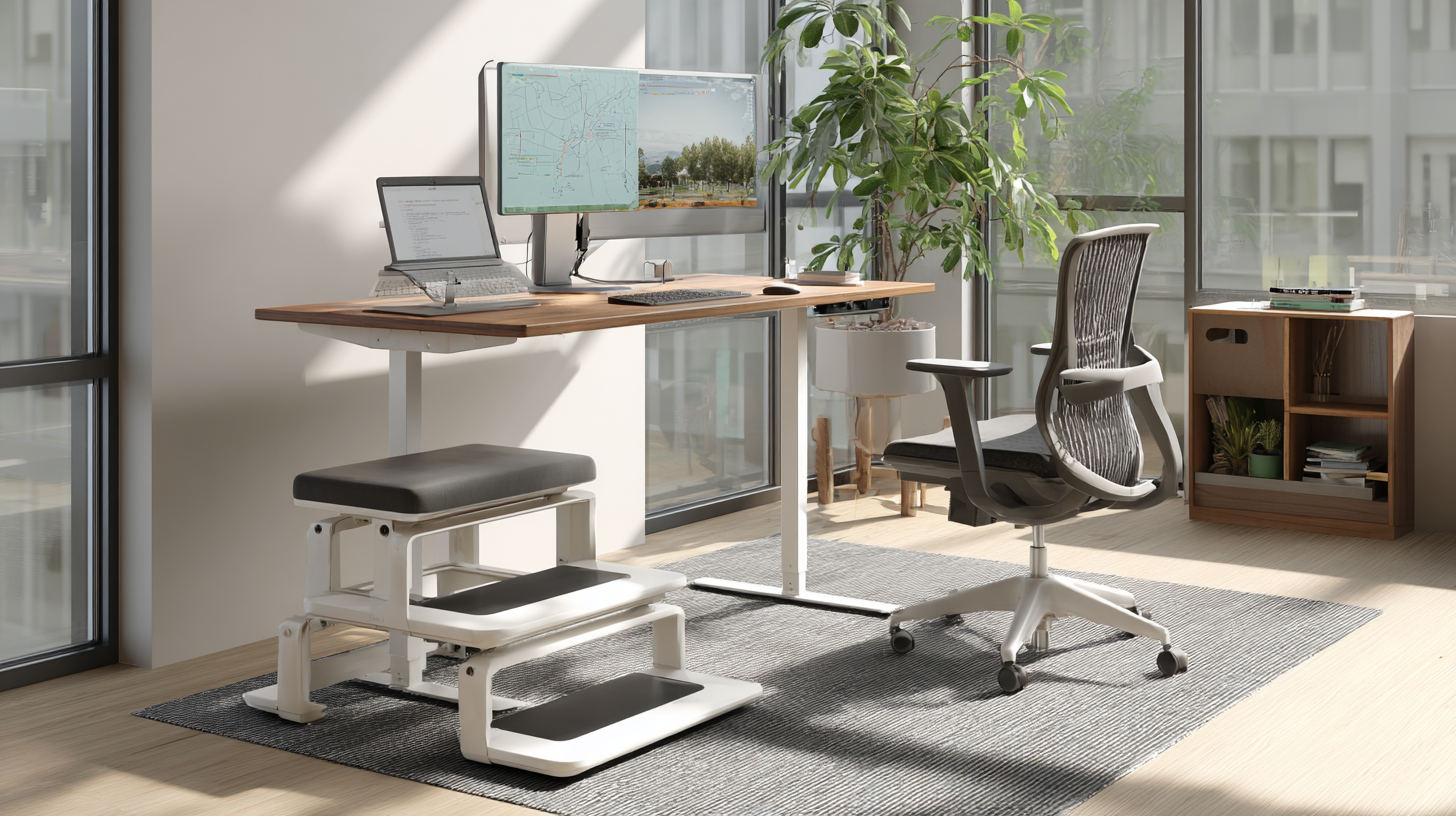

In the contemporary workspace, where comfort and productivity are paramount, the design of ergonomic furniture has taken center stage. Among these innovations, chair stands have emerged as crucial components that enhance the functionality and adaptability of modern office environments. As companies increasingly prioritize employee well-being, the demand for high-quality, ergonomically designed chair stands has surged. "Focusing on quality, made in China, leading global exports" perfectly encapsulates the commitment to excellence seen in the industry today. This blog explores the latest trends and innovative solutions in chair stand designs, highlighting how these advancements are transforming workspaces into healthier, more efficient settings. By examining emerging technologies and materials, we aim to showcase the significance of chair stands in promoting a balanced and productive work experience.

In today's fast-paced work environments, the design of office furniture has a significant impact on employee productivity and well-being. Ergonomics, the science of designing equipment and workspaces to fit the user, plays a critical role in enhancing comfort and efficiency. In particular, ergonomic chair stand designs contribute to promoting better posture, reducing the risk of musculoskeletal disorders, and encouraging movement throughout the day. When selecting office furniture, it is essential to consider how these designs can create a healthier workspace that accommodates the diverse needs of employees.
Modern ergonomic chair stand designs not only prioritize worker comfort but also aim to enhance functionality. Adjustable features allow users to personalize their workspace, adapting to various activities ranging from sitting to standing. This flexibility supports better circulation and reduces fatigue, ultimately leading to higher levels of focus and productivity. Moreover, incorporating innovative materials and technology into these designs can further bolster their effectiveness, resulting in work environments that are not just visually appealing but also supportive of employees' physical health. Investing in ergonomic solutions reflects a commitment to employee well-being, underlining the importance of ergonomics in shaping modern workspaces that foster great performance and job satisfaction.

In modern workspaces, the importance of ergonomic design cannot be overstated, especially when it comes to chair stand innovations. An effective ergonomic chair stand not only enhances comfort but also promotes productivity by encouraging proper posture. One essential feature of an innovative chair stand is adjustable height. This allows users to tailor the chair's position to their individual body types and work habits, reducing strain on the back and neck throughout the day.
Another key aspect is the incorporation of materials that provide both support and breathability. Chairs made from high-quality foam or mesh can contour to the user's body while allowing air circulation, which helps in maintaining comfort during extended periods of sitting. Furthermore, an intuitive design that offers easy reconfiguration—such as swivel functionality or integrated lumbar support—can greatly improve user experience. By blending these essential features, ergonomic chair stands not only foster a healthier work environment but also represent a significant step forward in workplace design.
This chart displays the essential features of innovative ergonomic chair stands based on their importance in modern workspaces. The data is categorized into five key features with corresponding importance ratings on a scale from 1 to 10.
In today’s fast-paced work environment, the integration of technology into ergonomic chair stand designs is revolutionizing how we prioritize comfort and health in the workplace. With advancements in smart technology, modern ergonomic chairs are not merely about support; they now incorporate features that adapt to the user's needs in real-time. For instance, sensors can track posture and provide feedback, nudging users to maintain optimal alignment, which reduces the risk of strain and injury.
Moreover, the use of app connectivity plays a pivotal role in enhancing user experience. Employees can sync their ergonomic chairs with mobile applications that monitor sitting habits, suggest breaks, and even guide users through exercises to alleviate tension. This seamless blend of comfort and technology not only boosts productivity but also cultivates a culture of health-consciousness in office settings. As companies increasingly recognize the value of investing in ergonomic innovations, the future of workspace design looks promising, emphasizing well-being alongside efficiency.
| Feature | Description | Technological Integration | Benefits |
|---|---|---|---|
| Adjustable Lumbar Support | Customizable back support that adapts to individual user needs. | Integrated sensors to detect posture and adjust support. | Reduces lumbar strain and discomfort. |
| Smart Seat Height Adjustment | Automatically adjusts seat height based on user preferences. | Utilizes user profiles stored in an app. | Promotes optimal ergonomics for various desk setups. |
| Breathable Fabric | Fabric designed to provide ventilation and comfort. | Embedded temperature sensors to monitor comfort levels. | Enhances airflow, reducing sweat and discomfort. |
| Mobile App Connectivity | Control settings and monitor usage through a dedicated app. | Syncs with smartphones for personalized data tracking. | Improves user engagement and awareness of ergonomic practices. |
| Sit-Stand Transition | Facilitates easy switching between sitting and standing positions. | Motorized lifting mechanism controlled via touch sensors. | Encourages movement and reduces sedentary behavior. |
In today’s dynamic work environment, the importance of
ergonomic design cannot be overstated.
Customizable ergonomic chair stand designs are emerging as
essential solutions for addressing the diverse needs of modern users. These designs prioritize
individual comfort and support, allowing users to adjust features such as height,
lumbar support, and armrest positions to find their ideal seating arrangement.
This flexibility not only enhances productivity by reducing strain during long hours of work
but also contributes to overall well-being.
Moreover, the ability to tailor ergonomic solutions to specific preferences extends beyond physical adjustments.
Various materials, colors, and styles enable organizations to reflect their brand identity while ensuring
that each employee feels valued and comfortable. As workplaces increasingly embrace hybrid models and diverse
teams, offering customizable ergonomic designs becomes a strategic advantage. This commitment to personalization
fosters employee satisfaction and retention, creating a healthier and more engaging workplace culture
conducive to collaboration and innovation.
In recent years, the emphasis on sustainability has transformed the furniture industry, particularly in the design and production of ergonomic chair stands. By integrating sustainable materials into these products, manufacturers are not only addressing environmental concerns but also enhancing the overall quality and appeal of their designs. Materials like reclaimed wood, recycled metal, and bio-based composites are becoming increasingly popular as they minimize waste and reduce the carbon footprint associated with traditional manufacturing processes.
Moreover, the use of sustainable materials in ergonomic chair stands does not compromise functionality or aesthetic appeal. In fact, these innovative materials often result in unique designs that cater to modern workspace aesthetics while promoting health and well-being. For instance, chair stands made from bamboo provide durability and a lightweight structure, offering both ergonomic support and style. As consumers become more environmentally conscious, the demand for such products will likely continue to grow, encouraging manufacturers to innovate and prioritize sustainability in all aspects of their production. This not only ensures healthier work environments but also fosters a greater sense of corporate responsibility in the marketplace.
